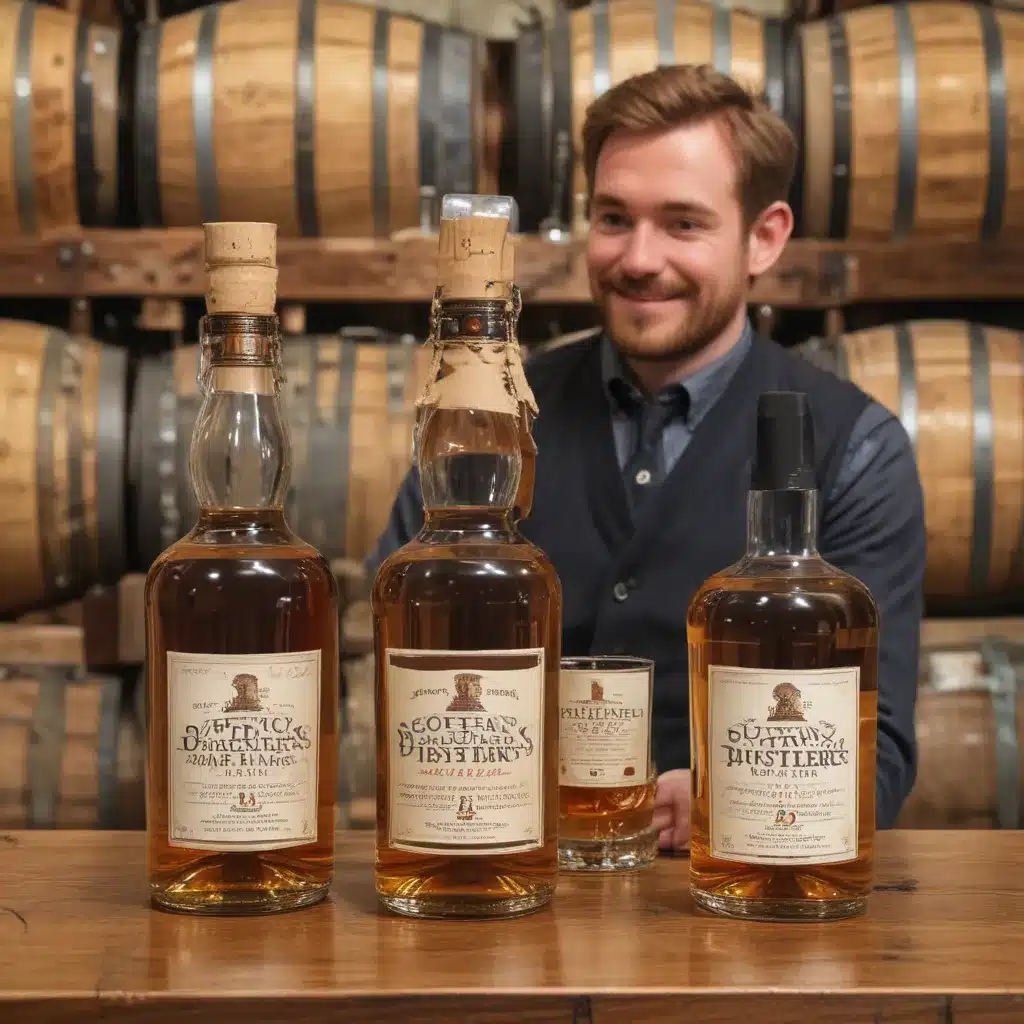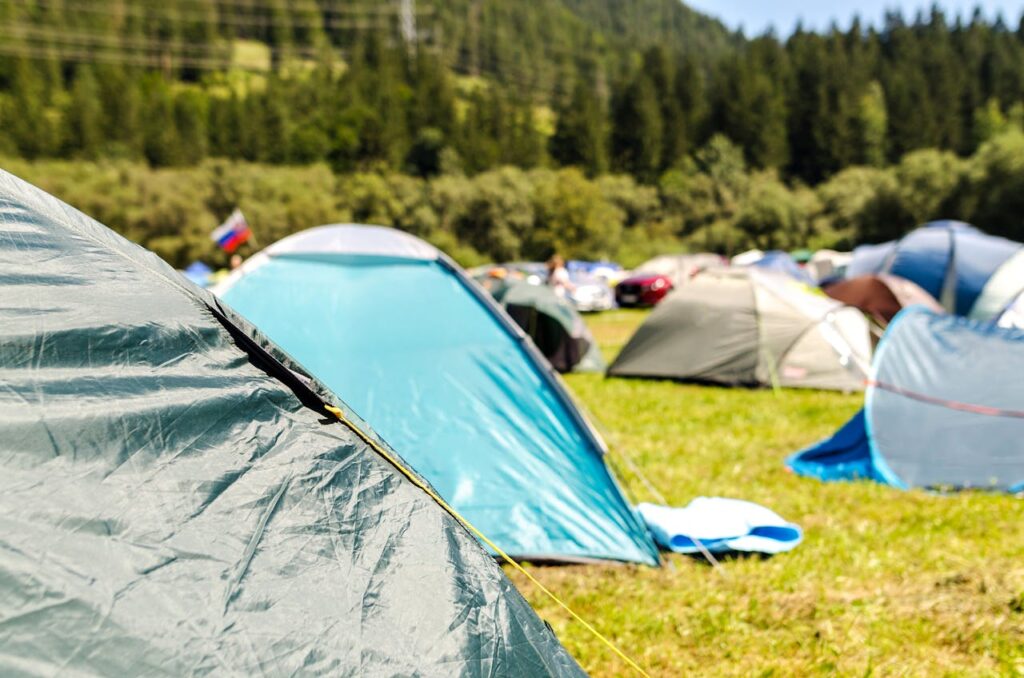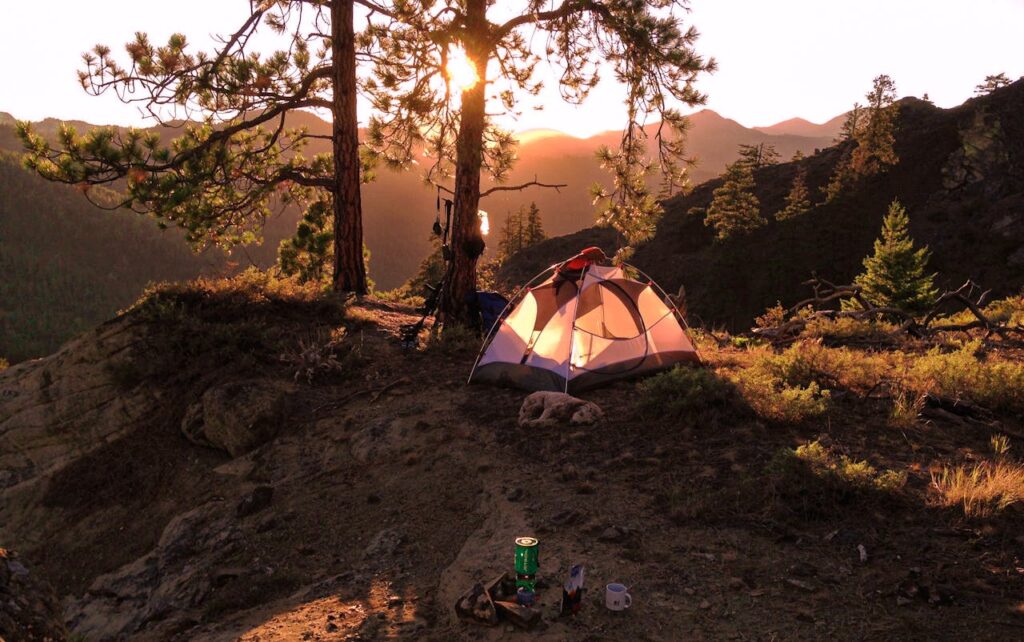
Whisky Wonderland in the Highlands
When my husband Sam invited me to meet him in Scotland between two trips I was leading in the United Kingdom and Ireland, I jumped at the chance. I knew there was only one thing on his mind – sampling the finest whiskies the country had to offer. Having worked as a bartender, Sam had developed an extensive knowledge of this timeless spirit, sparking his deep fascination with exploring more of it in Scotland.
As we made our way from Edinburgh up to the Scottish Highlands, I could feel the anticipation building. Whisky is more than just a drink in this part of the world – it’s a way of life. The Gaelic word for whisky, ‘uisge beatha’, literally translates to ‘water of life’. This is a direct translation of the Latin ‘aqua vitae’, which was used to refer to distilled spirits during the Roman era. And Scotland? Well, they’ve practically perfected the art of whisky distillation over the centuries.
Uncovering the Secrets of Scotch Whisky
The whisky business in Scotland is a big one – and sometimes quite a pretentious one. As we soon discovered, planning a whisky-focused trip to the Highlands can be really overwhelming. There are so many distilleries to choose from, and it’s hard to know what to look for. Luckily, Sam’s expertise proved invaluable as we navigated this spirited landscape.
According to our research, the first recordings of whisky distillation in Ireland and Scotland date back to the 1400s. While Ireland may have produced whiskey first, the Scots will argue that they’re the ones who perfected it. In those early days, the whisky was vastly different from what we know today – it was un-aged, much more akin to moonshine.
Over the next couple of centuries, the distillation process continued to evolve and improve, until the early 1700s when England and Scotland merged into one kingdom. With this union came new opportunities for taxes, and the ‘malt tax’ of 1725 hit the Scots hard, resulting in a 90% tax rate on whisky. To make matters worse, the British crown also put a strict limit on the number of whisky licenses it would allow. Between the taxes and licenses, most Scottish whisky production was either shut down or driven underground by the middle of the 1800s. It was a dark time, not unlike the American Prohibition era, with an estimated 75% of Scotland’s whisky output becoming illegal.
Thankfully, the Excise Act of 1823 eased the restrictions on distillery licensing, and whisky production started to climb once again, ushering in a new era of revitalization for the industry.
Scotch vs. Whiskey: What’s the Difference?
One thing that became immediately clear as we dove deeper into the world of Scottish whisky is that there’s often confusion around the spelling. Is it ‘whisky’ or ‘whiskey’? According to our research, the distinction largely comes down to the region of origin.
Most of the world, including Scotland, spells it ‘whisky’, while Ireland and the US add an ‘e’, spelling it ‘whiskey’. For the purposes of this article, we’ll stick with the Scottish spelling, as this is all about Scotch whisky after all.
But Scotch whisky is not fundamentally different from other whiskies – it’s simply a colloquial term used by people outside of Scotland to describe whisky that comes from Scotland. A Scot would simply call it ‘whisky’, not ‘Scotch’.
That said, there are some general differences between Scotch and Irish whiskey. Scotch whisky is typically made from malted barley, while Irish whiskey often uses unmalted barley. Scotch is also normally distilled twice, while Irish whiskey is frequently triple distilled. This usually results in Scotch having a fuller, heavier taste, while Irish whiskey tends to be lighter and smoother.
One unique variety of Irish whiskey is the single pot still whiskey, which includes unmalted raw barley in the mash. This component gives the whiskey a spicy complexity and an oily mouthfeel, leading to a long-lasting, enjoyable aftertaste. In Sam’s opinion, this is the most interesting and unique style of whisky – he recommends trying a bottle of Green Spot or Redbreast to experience it for yourself.
Navigating the Whisky Regions of Scotland
As we continued to explore the world of Scotch whisky, we learned that the different regions of Scotland each have their own distinct characteristics and flavor profiles. Let’s dive into a few of the most notable:
The Lowlands
The Lowlands region, located in the southernmost part of Scotland, is characterized by its relatively flat to gently rolling terrain – less mountainous compared to the Highlands. This fertile land, with its mix of farmland, valleys, and meandering rivers, is perfect for malt cultivation.
Lowland whiskies tend to be on the softer, smoother side, making them great for an aperitif. Common flavors include honeysuckle, toffee, grass, cream, and lighter spices. Glenkinchie is a good representative of this region.
Speyside
The Speyside region, named after the Spey river, is home to the highest concentration of distilleries in Scotland. This fertile area, with its abundance of tributaries and valleys (known as ‘glens’), provided an ideal location for illicit whisky production back in the 1700s and 1800s.
Speyside whiskies are typically light on peat flavor but heavy on fruity, nutty notes. You’ll often find flavors of honey, apple, pear, vanilla, and other spices. Many Speyside whiskies are also aged in sherry casks, adding another layer of complexity. Some of the most well-known Speyside distilleries include GlenFiddich, GlenMoray, The Balvenie, and Aberlour.
The Highlands
The Highlands region, which technically includes the islands, is the largest whisky-producing area in Scotland. As a result, it’s hard to generalize the flavors and characteristics, as they can range from light and citrusy to smoky and peaty to salty and minerally.
The Highlands also feature a wide variety of barrel combinations, further contributing to the diversity of flavors. Some of Sam’s favorites from this region include Oban, Talisker, and Dalwhinnie.
Islay
The island of Islay, located off the western coast of Scotland, is renowned for its distinct and bold whisky character. With a harsh climate and no trees to provide firewood, the islanders turned to peat moss as their fuel source. This imparts a strong, smoky, peaty flavor to the whiskies of Islay.
If you’re a fan of peat, this is the region for you. The whiskies are bold and assertive, often brimming with salt, peat, and smoke. This makes for a rich, indulgent experience, although the peatiness can be a bit polarizing for those not accustomed to the unique flavor profile. Lagavulin, Bunnahabhain, and Laphroaig are all excellent representatives of the Islay style.
Distillery Visits: Discovering the Art of Whisky-Making
One of the best ways to truly immerse yourself in the world of Scotch whisky is to visit the distilleries themselves. Most distilleries in Scotland offer public tours, where you can see the entire whisky-making process up close.
These tours typically include a guided walkthrough of the distillery, where you’ll witness the various stages of production, from the mash to the still to the aging warehouses. And of course, you’ll get to sample a dram or two (or three, in the case of Oban!) along the way.
If you’re not interested in a full tour, many distilleries also offer standalone whisky tastings, where you can simply experience the flavors without the full behind-the-scenes tour. These tastings usually consist of 3-5 samples, allowing you to explore the different styles and techniques employed by the distillery.
Regardless of which option you choose, it’s always a good idea to make your reservations in advance, as these experiences are quite popular and tend to fill up quickly, especially during the high tourism season.
Standout Distilleries in the Highlands
As we made our way through the Scottish Highlands, a few distilleries stood out as true highlights of our whisky-fueled adventure:
Talisker Distillery
Nestled on the picturesque shores of Loch Harport, the Talisker Distillery is a beacon of tradition and craftsmanship, creating one of Scotland’s most renowned single malt whiskies. Established in 1830, this storied brand really understands itself and its customers.
As you approach the distillery, the salty sea breeze and majestic Cuillin Mountains set the stage for a captivating journey into the world of whisky-making on the Isle of Skye. If you don’t have time for a full tour, you can simply grab a whisky flight at the Talisker bar and sample some of the best the region has to offer.
Dalwhinnie Distillery
Surrounded by sweeping landscapes of heather-clad moors, craggy mountains, and pristine lochs, the Dalwhinnie Distillery is impressive and iconic in appearance. Its high-altitude location has a profound impact on the whisky’s character, as the cold, crisp mountain air influences the maturation process.
The resulting whiskies often possess a delicate balance of sweetness, floral notes, and a touch of heathery peat, celebrated for their smoothness and approachability. The gift shop is small but cozy, and they offer walk-in tastings for those who don’t want the full tour experience.
Oban Distillery
Perched at the water’s edge in a historic stone building, Oban Distillery is a great distillery in a great location. Founded in 1794, it carries with it centuries of tradition and craftsmanship, evident in every nook and cranny.
Oban is one of the few distilleries located right in the heart of a town – in this case, the charming harbor town of Oban. The distillery is known for its distinctive small-batch production, which allows for meticulous attention to detail and an emphasis on quality over quantity. The proximity to the coast is reflected in the salty tang that sometimes finds its way into the whiskies produced here, adding a unique maritime character to the final product.
Sleeping in a Distillery on the Isle of Raasay
One of the highlights of our trip to the Scottish Highlands was our stay at the Isle of Raasay Distillery. This small island, just east of the Isle of Skye, is home to only about 150 residents and two main businesses – a villa hotel and the distillery.
Accessible only by ferry, the Isle of Raasay offered an off-the-beaten-path experience with unmatched views of the Isle of Skye. While the whisky might not be as established as some of the more famous brands, the vibes at the Isle of Raasay Distillery were perfect.
Unlike some distilleries that can come across as high-brow and pretentious, this one had a fun, lighthearted approach. The staff was enthusiastic and proud, and the tour was informative and intimate. It felt like a new take on whisky production, with a start-up kind of vibe. I found it delightfully unpretentious while still offering great quality.
Plus, the bar was stylishly designed with cocktail options for those who don’t love to drink whisky neat. And the opportunity to sleep in a distillery? That’s a once-in-a-lifetime experience that we’ll never forget.
Exclusive Distillery Bottles: Souvenirs with a Twist
As we visited the various distilleries throughout our journey, we couldn’t help but be drawn to the exclusive, distillery-only bottles they had on offer. These whiskies are not sold in other locations, making them true souvenirs of the experience.
In our experience, these distillery-exclusive bottles tend to be of higher quality than the standard offerings. Some are even small-batch whiskies, with the exact number of bottles in the batch clearly marked.
One of our favorite finds was the distillery edition of Dalwhinnie – a whisky that perfectly captured the character of the high-altitude region. These unique products are a bit more expensive than the regular bottles, but the opportunity to take home a piece of the distillery’s heritage makes them well worth it.
Whether you’re a whisky connoisseur or a curious newcomer, a trip to the Scottish Highlands is a must for anyone looking to truly immerse themselves in the art of Scotch whisky-making. From the rolling landscapes of the Lowlands to the rugged, peaty island of Islay, each region offers its own distinctive flavors and experiences.
So why not plan your own whisky-fueled adventure? Head to Loch Ness Shores, our family-run campsite in the heart of the Scottish Highlands, and let the spirit of Scotland’s finest distilleries captivate your senses. Sláinte!

